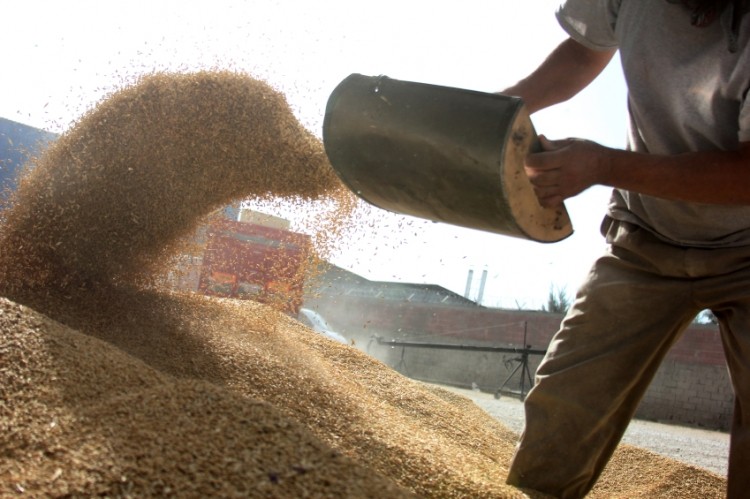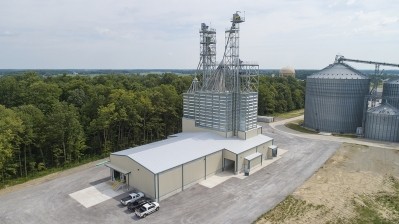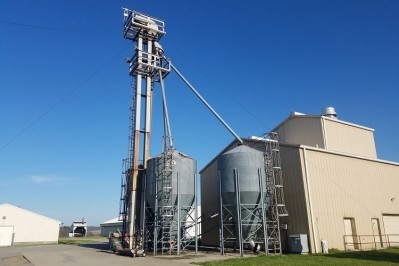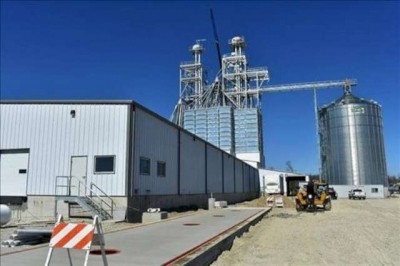US: Iowa gets organic feed mill

Interstate Organics, part of the grain and feed ingredients merchandising business, Interstate Commodities, opened the organic feed plant.
“We were in the process of building an organic mill,” Dan Yaksich, Interstate Commodities operations manager, told FeedNavigator. “We were in the engineering stages when this became available.”
“We bought it, it was not very old and it was built very well,” he said. “So instead of starting from scratch, we renovated the mill.”
The facility is centrally located to access organic farmers in the region including farms known by the company in South Dakota, southern Minnesota, Iowa and Nebraska, said Yaksich. “We’ve been trading organic grain for some time in the region, but we’d always bought and resold it.”
The parent company has headquarters in New York, but manages grain elevators and feed mills across the country. Yaksich said the Iowa mill makes sense from a geographic basis. Additionally, the new facility helps address the needs of both producers who grow organic feed crops and those seeking organic feed, he added.
Project details
Work to acquire and update the feedmill started about four months ago, said Yaksich. After buying the facility, it had to be cleaned and some of the equipment including grinders and rollers were updated.
“I wouldn’t say the processing is different, but the paperwork is off the charts different,” he said. “It’s taken several months to achieve all the certifications. It’s a hard process and everything is audited, every ration is audited, and every ingredient.”
When up-to-speed, the facility is set to produce about 30-35 tons of organic feed an hour or about 250 tons a day, he said. Currently, the team is still in early stages of refining production.
It is expected that the facility will be operating at full-speed by the end of the year, said Yaksich. It has already started producing commercial feed and will continue to add additional loads.
A new computer-based batching system also is in place, he said. Along with improving efficiency, the facility is focusing on its biosecurity system and how it handles deliveries and customers.
“Traceability and always knowing exactly where the grain is coming from, and where everything is coming from – there is a lot more planning and organization than other mills,” he said. “One load of non-organic product in the mill takes an entire clean out.”
The facility also has needed to find supplies of the types of alternative products that are used to make organic feed, like diatomaceous earth, said Yaksich. “Each one of the products has to be individually certified before it can be brought in to the mill,” he added.
Currently the facility is predominately focused on working with past customers and producing organic dairy and poultry feeds, he said. But, that work will expand as the facility comes fully on-line.
Challenges addressed
In addition to producing feed, Yaksich said the facility offers a way to address some of the challenges facing both organic crop growers and organic animal producers.
“Farmers really have very few options,” he said. “Organic farming has run into logistical problems in the last couple of years in that there are few end users for them to sell their grain to. There are only a few processors and the supply outweighs the demand in the region – it curbs the incentive for farmers to grow organically – but we’re another end user.”
The demand for organic food products in the US including milk, eggs and chicken continues, said Yaksich. “There’s almost an insatiable demand for organic food and the country doesn’t have the infrastructure to support that,” he added.
In the long run the mill, and adding others like it, could help bring down the cost of organic products, he said, because there will be greater avenues of supply for organic producers.
“They [organic producers] are all trying to find ways to be more efficient in production,” he said. “A lot smaller farms, and ranches, and dairies we are talking to, all kinds of people, are trying to find sources for feed.”










